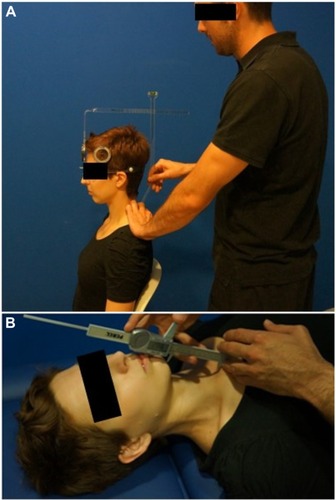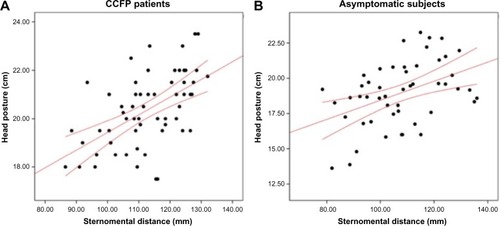Figures & data
Figure 2 Craniocervical posture measurements.

Table 1 Demographic characteristics for the asymptomatic subjects’ and chronic CCFP patients’ samples
Figure 3 Scatter diagram showing correlation between head posture and the sternomental distance.
Abbreviation: CCFP, cervico-craniofacial pain.

Table 2 Comparison between the asymptomatic subjects’ and chronic CCFP patients’ samples for measurements
Table 3 Intrarater reliability and descriptive statistics for measurements in chronic CCFP patients and asymptomatic subjects
Table 4 Statistical metrics from Bland–Altman analysis of the intrarater measurements in chronic CCFP patients and asymptomatic subjects

